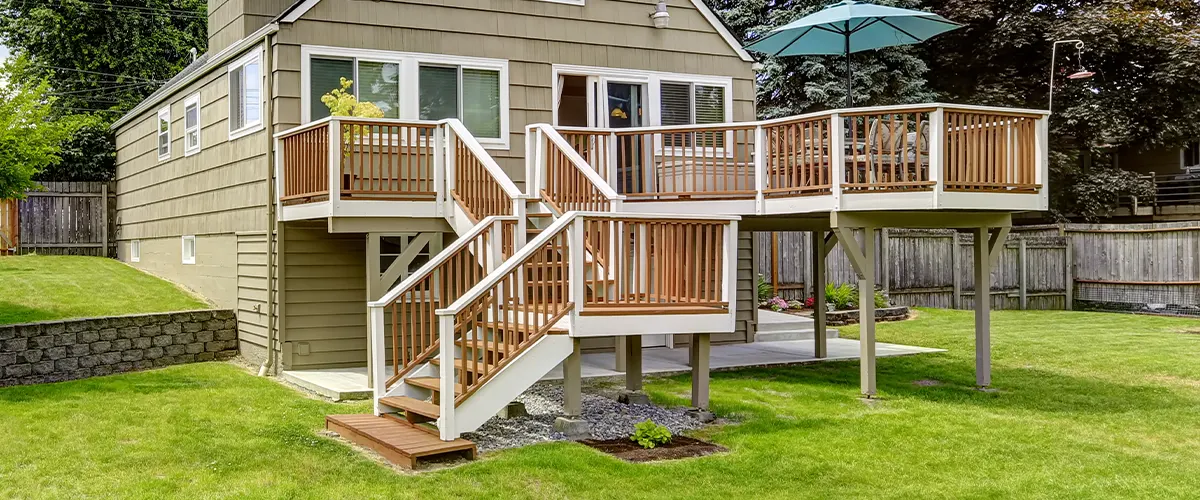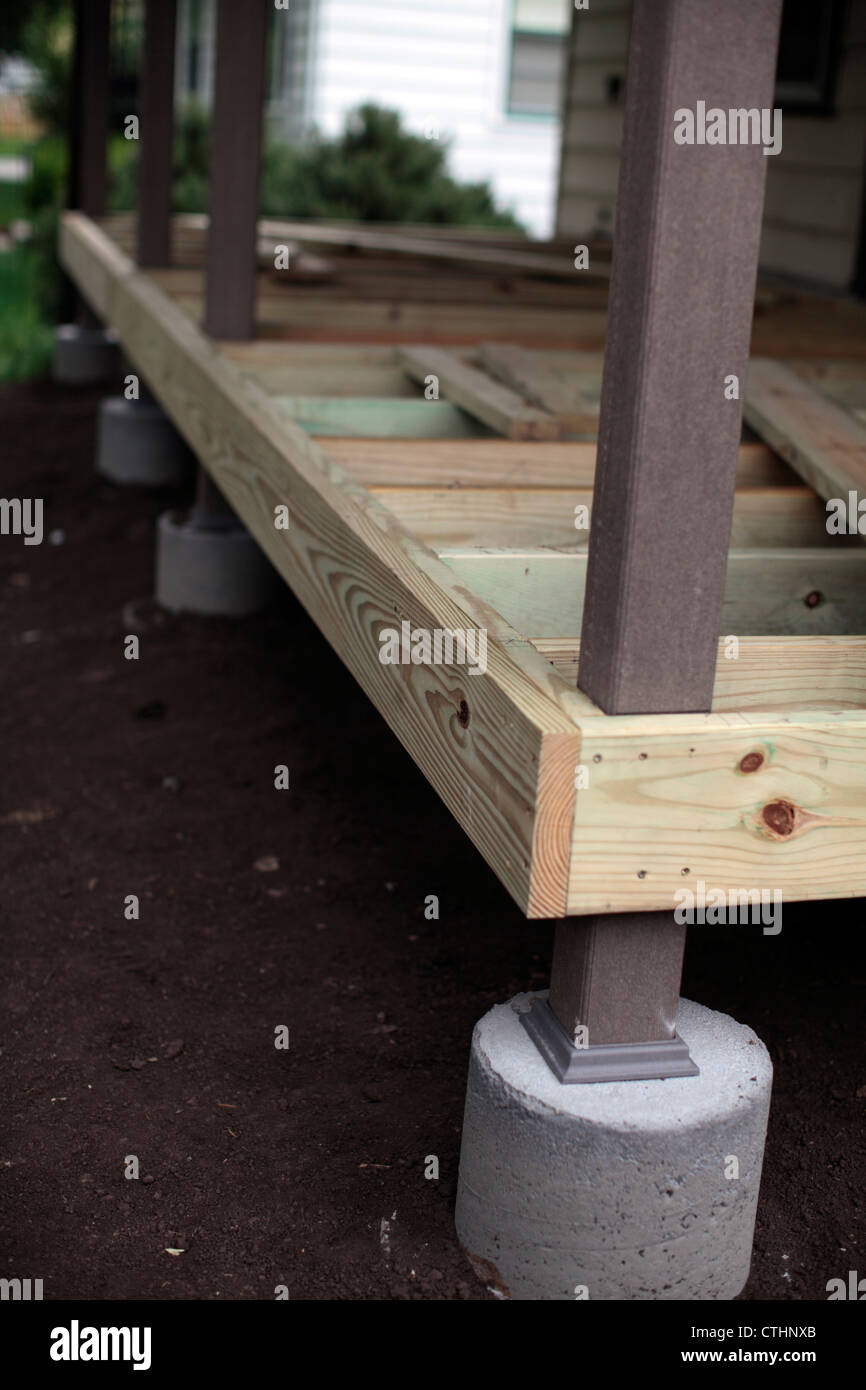Picking the Right Deck Footings for Stability and Durability
The durability and safety and security of your deck depend greatly on the kind of footings you choose, as they supply the important assistance and stability to withstand the examination of time. In this conversation, we will discover the numerous types of deck grounds, consider the crucial elements to consider when making a decision, and dig into the pros and cons of various alternatives.
Types of Deck Footings
There are several types of deck grounds that can be made use of, each offering unique advantages and considerations. One usual sort of ground is the concrete pier ground. These footings contain a round opening full of concrete, which provides a solid foundation for the deck messages. Concrete pier footings are fairly easy to mount and provide outstanding stability, making them a prominent selection for several deck projects.
These footings are mounted by screwing them into the ground, which creates a protected foundation for the deck. They also permit for easy adjustment and progressing of the deck if needed.
Conversely, some building contractors choose precast concrete footings. These footings are constructed from long lasting concrete and can be found in various sizes and shapes to fit various deck layouts. Precast concrete grounds are hassle-free to install and give a steady base for the deck framework.
Lastly, one more alternative is the post-in-anchor ground system. This sort of footing involves driving a metal anchor into the ground and affixing it to the deck post. It uses adaptability in terms of placing the deck articles and appropriates for decks with lightweight structures.
When picking the right kind of deck ground, it is important to think about variables such as soil conditions, deck lots, and local building ordinance (Deck Footings). Consulting with a specialist contractor or structural engineer can assist ensure the appropriate footing is picked for a risk-free and secure deck
Aspects to Take Into Consideration When Choosing Footings
When choosing the suitable grounds for a deck, it is vital to very carefully take into consideration numerous elements such as dirt conditions, deck load, and adherence to neighborhood building codes. These aspects play a significant role in guaranteeing the security and sturdiness of the deck structure.
The type of dirt on which the deck will be built identifies the kind of grounds called for. On the various other hand, decks developed on clay or expansive soils may call for footings that can accommodate the soil's tendency to increase and contract.
Another vital aspect is the deck tons. The weight of the deck, including the products used and any potential live loads such as furnishings or celebrations, should be taken into consideration when choosing grounds. The grounds need to be developed to birth the weight of the deck and disperse it uniformly to protect against any kind of architectural concerns or failures.
Finally, adherence to neighborhood building regulations is extremely important. Building ordinance vary from region to area, and it is essential to adhere to the details needs set by the local authorities. Deck Footings. These codes guarantee that the deck is developed securely and meets the needed criteria for architectural integrity and load-bearing capacity
Concrete Grounds: Benefits And Drawbacks

Concrete grounds provide numerous advantages and downsides when used as the foundation for a deck. On the positive side, concrete footings offer exceptional stability and sturdiness.
An additional benefit of concrete grounds is their versatility. They can be poured into different sizes helpful hints and shapes to accommodate different deck layouts and configurations. Concrete footings can be personalized to fit the specific requirements and needs of the deck framework.
Nonetheless, there are additionally some downsides to using concrete grounds. One major negative aspect is the expense and labor included in their installation. Concrete grounds call for excavation and usually need the help of hefty equipment. This can raise the overall cost of the deck task and may need expert support.

Helical Piers Vs. Sonotubes: Which Is Better?
In taking into consideration the foundation choices for a deck, the contrast in between helical piers and sonotubes is essential in determining the premium choice. Helical piers, likewise called screw piles, are steel shafts with helical plates affixed to them. They are turned right into the ground using hydraulic equipment, offering a secure and sturdy foundation for the deck. On the other hand, sonotubes are cylindrical types made of cardboard or fiber material that are loaded with concrete. They are placed in a hole dug into the ground and provide support for the deck.
The helical plates on the piers produce a solid grip with the dirt, preventing any activity or changing of the deck. Sonotubes, on the various other hand, depend exclusively on the concrete filling for security, which may not offer the same degree of stamina and resistance.
In terms of setup, helical piers are fairly simpler and faster to set up contrasted to sonotubes. The hydraulic equipment made use of to twist the piers into the ground makes certain a reliable and quick process. Sonotubes, on the various other hand, require excavating holes and pouring concrete, which can be labor-intensive and time-consuming.
In addition, helical piers are an even more functional option. They can be made use of in different dirt conditions and can be readjusted or reinforced if required. Sonotubes, on the other hand, may need additional assistance, such as rebar, in particular soil problems or locations with high tons demands.
Choosing the Right Footings for Your Deck's Measurements
For ideal architectural integrity, it is important to meticulously select the proper grounds that line up with the dimensions of your deck. The measurements of your deck, including its elevation, width, and length, play a considerable role in establishing the type and size of grounds required.
When choosing grounds for your deck, it is very important to take into consideration the load-bearing capacity of the dirt. The weight of the deck, combined with the weight hop over to these guys of any type of furniture or individuals on it, applies a significant pressure on the grounds (Deck Footings). It is crucial to pick grounds that can appropriately sustain this weight without sinking or moving over time.
The shapes and size of the footings should additionally be considered. Larger decks with higher dimensions call for bigger footings to provide sufficient security and support. The this link form of the grounds, whether they are square or round, depends upon the design and format of the deck. Furthermore, the deepness at which the footings are set up must be established based upon the frost line in your region to stop any kind of heaving or moving due to freezing temperatures.
Final Thought
In final thought, choosing the ideal deck footings is critical for making certain stability and durability. Factors such as the kind of footings, the deck's dimensions, and the pros and disadvantages of various alternatives should be considered.
These grounds are composed of a round opening filled with concrete, which supplies a strong structure for the deck blog posts. Concrete pier footings are fairly easy to install and supply excellent security, making them a preferred choice for lots of deck projects.
Precast concrete grounds are convenient to set up and give a secure base for the deck framework.
It offers flexibility in terms of positioning the deck messages and is ideal for decks with light-weight structures.
Concrete grounds use numerous advantages and drawbacks when made use of as the foundation for a deck.